Fuchsia is a genus of flowering plants that consists mostly of shrubs. There are almost 110 species of fuchsia. Most fuchsias are shrubs from 0.2 to 4 m tall. Fuchsia leaves are opposite or in whorls of three to five individual blades; they usually have serrated margins 1 – 25 cm long, and can be either deciduous or evergreen, depending on the species. The flowers are very decorative; they have a pendulous teardrop shape and are displayed in great numbers. They have four long, slender sepals and four shorter broader petals.
Fuchsias are popular garden shrubs, and once planted can live for years with a minimal amount of care.
The hardier species and those producing the smaller flowers are popular with some as bonsai. Fuchsia magellanica, commonly known as the Hummingbird fuchsia is the most popular.
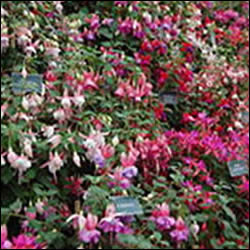
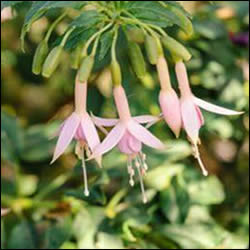
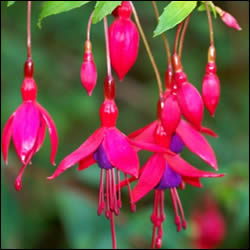
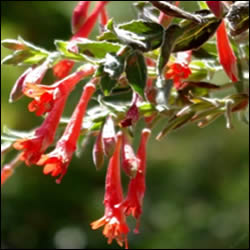
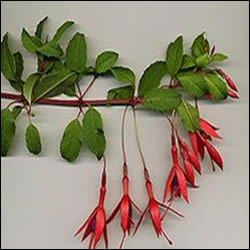
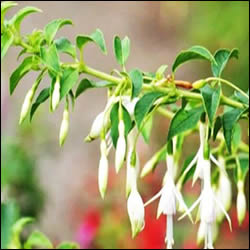
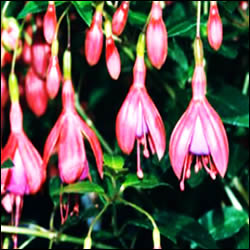
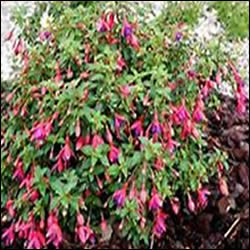
Fuchsia used for bonsai purposes are often of the “microphylla” or the “magellanica” kind. This species grows fast and has pink/purple flowers in the summer. Many Fuchsia species are hardy, but need to be protected carefully during the winter.
Specific Bonsai care guidelines for the Fuchsia.
- Some fuchsias can be miniaturized into bonsai form, but not with the standard techniques used for tree species.
- Fuchsia bonsai need a bright, sunny spot if you want to get successful flowering. If not, provide some shade in the afternoon. They needs to be protected from temperatures below 5°C
- Watering - normal watering but misting is advisable as the tree likes high humidity. Feed regularly.
- Pruning - this is where the differences lie. To increase ramifications prune the tree regularly during the growing season. To grow thicker branches or a thicker trunk, remove all the flowers as they attempt to form but do not prune the branches. Wiring is difficult as they are incredibly brittle and also readily snap off at the junction with the trunk. As they are not “proper” wood like a tree, the inside of a branch is pithy rather than heartwood as found in trees.
- If you are looking to abundant flowering, wait until you have the shape and form you are looking for and then, when the next season approaches, they should be pruned. While many shrubs can be spared the pruning for one or several years, it is not so with fuchsias. Probably no other plant responds so willingly to pruning as does the fuchsia. The best way to shape a fuchsia is by the 'clip and grow' method, i.e. at a junction or internode, remove the leaf and bud on the side that you do not want.
- The matter of correct pruning is a good example of how a little more knowledge can add greatly to the fun of growing fuchsias. The reasons for pruning fuchsias are two-fold - first to shape the plant, and second to produce more flowers. As fuchsias always bloom on new wood and new growth is created by pruning, thus the necessity for pruning becomes obvious. Pruning can be as severe as desired because there is no danger of cutting off future bloom. But if we forget or neglect to prune one fuchsia, you will regret it for the rest of that year.
- They have a flared root system and this will help with the illusion of a mature tree. DO NOT be in too much of a hurry to put your fuchsia into a proper bonsai pot; it is better to get the style and shape right first and this may take more than one growing season. Bonsai is all about patience!
- Repotting - as the Fuchsia’s root system grows rapidly, annual repotting is required. A basic soil mix can be used.
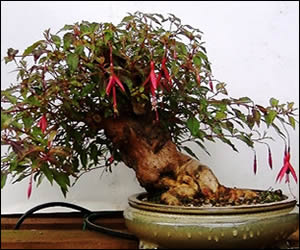
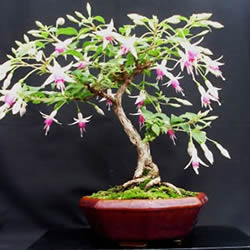
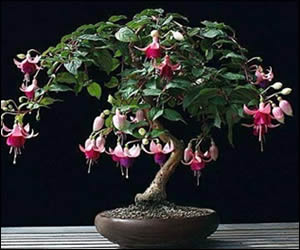
Web design: nysys